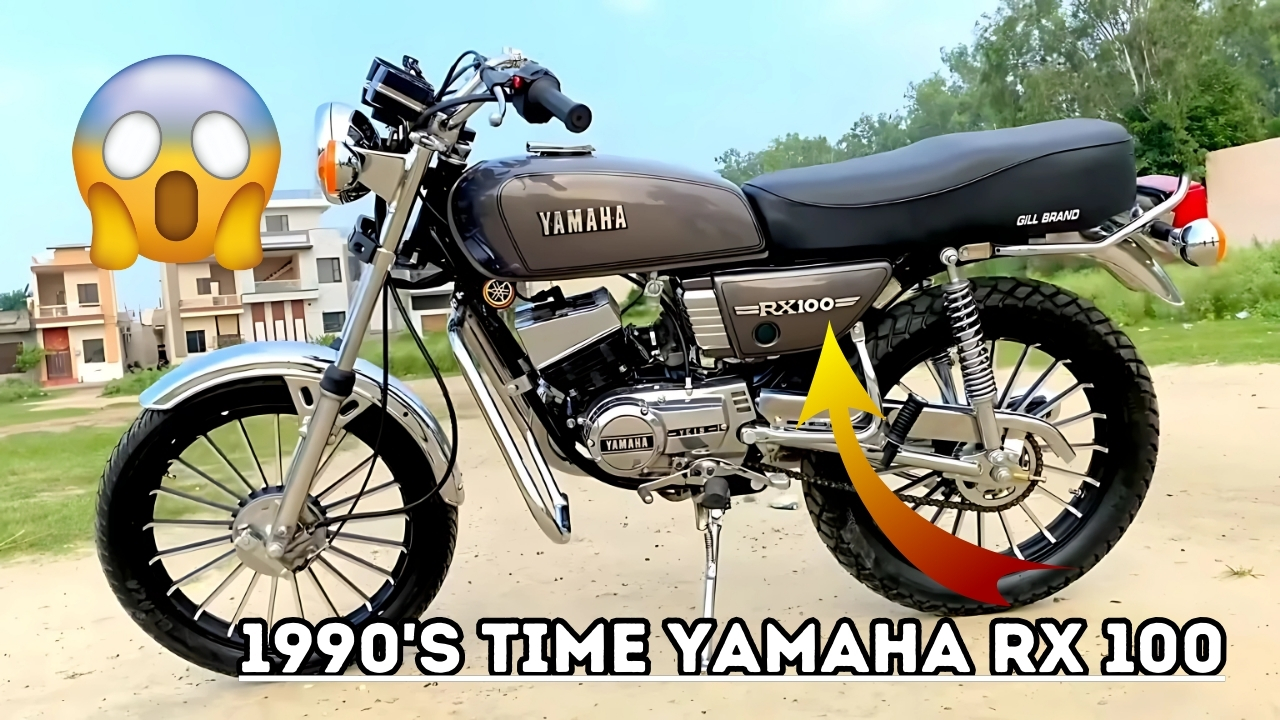Yamaha RX 100 : The highly awaited Yamaha RX 100 is making a significant return to the Indian motorcycle scene, with the official relaunch set for early 2025. This legendary bike, cherished during the 1990s by a plethora of riders, has been reimagined to align with current standards while retaining its unique charm.
First hitting the market in 1985, the RX 100 quickly evolved from a simple mode of transport to a cultural icon. Its lightweight structure, impressive acceleration, and the characteristic two-stroke exhaust sound created a passionate fan base that has endured well beyond its production period. The sound of the RX 100 became synonymous with the bustling streets of India, making it a memory that’s hard to let go for many enthusiasts.
Rajesh Menon, a 43-year-old software engineer from Bangalore, fondly recalls the day his father brought their RX 100 home. “It was a symbol of aspiration for many middle-class families,” he reminisces. Such personal narratives underscore the powerful intergenerational bond that Yamaha is capitalizing on with this revival. The company acknowledged that ongoing demand from fans, both original owners and their descendants, played a crucial role in this decision to bring the RX 100 back.
Yamaha RX 100 Engineering Challenges Overcome
One of the notable challenges Yamaha faced was adapting the iconic two-stroke engine to meet India’s strict BS6 emission standards. Reports from industry insiders indicate that experts at Yamaha’s R&D center in Surajpur have successfully implemented a combination of direct injection technology, electronic engine management, and catalytic converters to overcome these hurdles.
Dr. Arjun Nair from IIT Delhi highlights the complexity of maintaining the engine’s character while reducing emissions. He points out that traditional two-stroke engines are known for their higher emissions, but Yamahas hybrid approach effectively retains the essence of the original while significantly lowering its environmental footprint.”
While the retro-inspired powerplant maintains the familiar torque curve and throttle inputs, it reportedly now boasts a reduction in emissions by about 85%. A slight increase in displacement to 110cc has been noted, with the power output closely matching the original’s 11 horsepower.
Yamaha RX 100 Faithful Aesthetics with Modern Touches
In its revival, Yamaha has been careful to honor the original design ethos of the RX 100. Images shared by the company show a bike maintaining its classic aesthetics, characterized by the iconic teardrop fuel tank and flat seat. Despite these nostalgic elements, several modern upgrades have been integrated, including LED lights and disc brakes, ensuring that the bike meets contemporary rider expectations.
Eishin Chihana, Chairman of Yamaha Motor India, expressed the commitment to preserving the essence of the original model, emphasizing thoughtful changes rather than complete overhauls. The adoption of high-tensile steel for the frame and modern alloys for wheels has not only increased the bike’s durability but also improved its handling capabilities while keeping the lightweight feel that fans love.
Yamaha RX 100 Market Positioning and Availability
Market analysts project that the RX 100 will find its niche as a premium offering in Yamaha’s lineup. Unlike the typical commuter bikes in India, which range from ₹70,000-90,000, the new RX 100 is expected to be priced around ₹1.5 lakh (approximately $1,800). This premium pricing reflects both its limited production and the advanced engineering involved in its reimagining.
Yamaha plans to produce an initial batch of 7,500 units, with deliveries slated to commence in February 2025. A unique allocation system will prioritize original RX 100 owners for the first chance at acquiring the newly updated model, a thoughtful nod to the loyal fanbase that has kept the spirit of the motorcycle alive.
Sidharth Krishnan, a motorcycle historian, sheds light on the cultural significance of this motorcycle. “It’s not just about the bike; it symbolizes a transformative time in India—an era where Japanese vehicles became a common sight for the middle class. The relaunch underlines this historical narrative, making it relevant for today’s generation.” To facilitate the buying experience, pre-launch events are set to take place in major Indian cities starting November 2024, where enthusiasts can see the motorcycle in person and reserve it at authorized dealerships.
